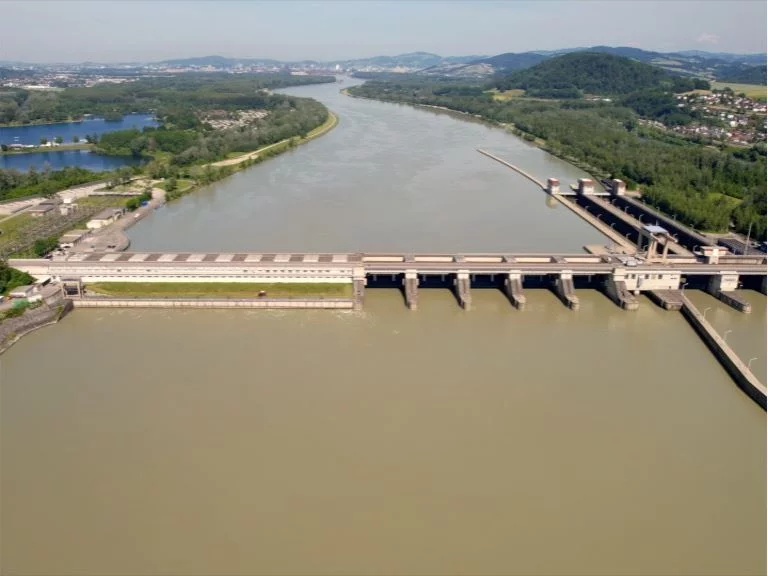
Everything on the river.
Run-of-River Plants – A Reliable Power Supplier
Our run-of-river power plants generate electricity around the clock and are an essential factor for covering the base load of power consumption.

How does a run-of-river power plant work?

Our backbone for clean energy
Run-of-river power plants are reliable and capable of generating electricity without interruption. Their potential for generating electricity depends to a large extent on the gradient of the river. However, this type of power plant is unable to store the generated electricity. That’s why we also operate storage and pumped storage power plants, whose storage capacities are the best option for supplementing the run-of-river power plants. Altogether, this enables us to ensure a stable and safe supply. The excess electricity produced is used to store energy in the pumped storage plants as a way of minimising losses. That makes an essential contribution to system stability and supply security in Austria and neighbouring countries.
Where are we now?
We are the leading energy transition company in Austria and the second-largest generator of electricity from hydropower in Germany. Our more than 100 run-of-river power plants in Austria and Bavaria currently generate renewable electricity. Within the context of the prevailing degree of expansion of hydropower and the corresponding environmental protection regulations, the possibilities for such plants are already being utilised at a very high level. Almost 100% of the electricity we generate comes from hydropower. With this high proportion of renewable, CO2-free, easily plannable and flexible electricity generation, VERBUND is already making an important contribution to achieving the energy and climate targets.
Where are we going?
As the capacities for new run-of-river power plants are limited, we work continually on the further development of our existing plants. The goal is to increase efficiency and protect the ecosystems, in order to achieve the targets of the energy transition with full power. In addition, the new Mur power plant at Gratkorn is being constructed in partnership with Energie Steiermark.
Conservation and biodiversity
Expanding renewable forms of energy in a way that protects the environment is particularly important to us. In order to retain and improve and the diversity of flora and fauna, we invest in environmental protection and put ecological measures in place. Expenditure of around 400 million euros is anticipated until 2027 for land restoration measures and the creation of river consistency projects.

3D experience of our plants with the VERBUND app


